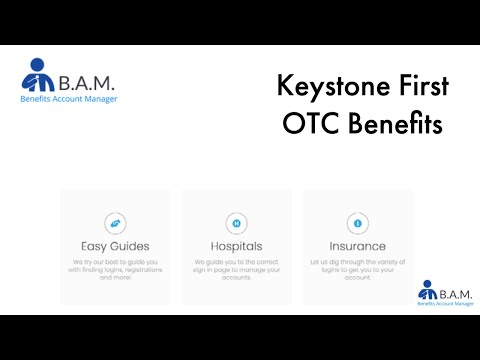What Does a Medical Assistant Do?
Contents
Medical assistants are vital members of the healthcare team. They perform many duties in physician’s offices and clinics, including scheduling appointments, taking medical histories, and providing patient education. If you are thinking of a career in healthcare, read on to learn more about what Medical assistants do.
Checkout this video:
Job Description
A medical assistant is a person who performs administrative and certain clinical tasks in a medical office. Medical assistants are unlicensed individuals who are trained to perform routine office and clinical tasks under the supervision of a licensed physician, nurse or other health care provider. They work in both outpatient and inpatient facilities, such as hospitals, clinics, and doctor’s offices.
Medical assistants take on various roles in a medical office. They may be responsible for greeting patients, answering phones, scheduling appointments, preparing patients for examination, collecting and recording patient information and vitals, handling correspondence, scheduling laboratory tests and x-rays, providing instruction to patients on various aspects of their health care, such as diet and medication schedules. Medical assistants may also be responsible for coding insurance forms and maintaining patient records. In some states they may also be allowed to give injections or perform minor surgical procedures.
Duties and Responsibilities
Medical assistants are multi-skilled health professionals specifically trained to work in outpatient settings such as medical offices and clinics. Their unique blend of skills includes clinical, administrative, and communication responsibilities. Depending on the size of the practice and state regulations, medical assistants may be asked to perform additional duties, such as scheduling surgeries and diagnostic tests, handling billing and coding, or giving patients injections. Here is a closer look at some of the most common duties performed by medical assistants:
Clinical responsibilities:
· Taking and recording patient vital signs, such as blood pressure and weight
· Drawing blood and collecting urine samples
· Performing basic lab tests
· Assisting with minor office procedures, such as applying bandages and removing sutures
· Giving patients injections
· Providing patients with instruction on taking medication and other self-care activities
Administrative responsibilities:
· Answering phones
· Greeting patients
· Scheduling appointments
· Handling correspondence
· Filing insurance claims
· Arranging hospital admissions and laboratory services
· Maintaining medical records
Communication responsibilities:
· Serving as a liaison between patients and doctors
· Explaining office policies to patients
· Providing instruction to patients on preparation for specific office procedures or tests
Skills and Qualifications
Becoming a medical assistant requires completing an accredited program and earning a certificate or diploma. Although not required, some students choose to become certified through the AAMA. Medical assistants should have clerical skills, such as typing, answering phones, scheduling appointments, and handling insurance and billing forms. They also should be detail oriented in taking medical histories and recording patients’ vital statistics and information. Excellent communication skills are essential, as medical assistants spend much of their day interacting with patients, answering their questions, and relaying instructions from physicians. In addition, they often work with people who are ill, injured, or under stress. Compassion and a caring attitude also are important qualities for medical assistants.
Some employers prefer to hire medical assistants who have completed a formal education program. Most accredited programs take about 1 year to complete and lead to a certificate or diploma.
Education and Training
In order to become a medical assistant, you will need to have at least a high school diploma or equivalent. Some students may choose to complete a postsecondary education program, which can lead to certification and enhanced job prospects.
There are many different types of medical assistant programs available, including certificate, diploma, and associate degree programs. Some programs may take as little as one semester to complete, while others may take up to two years. Programs typically include coursework in Medical Terminology patient care, medical office administration, and pharmacology.
Certification
There are many certification options for medical assistants. In some states, certification is not required, but employers prefer to hire candidates who have been certified. Certification demonstrates a commitment to the profession and shows that the medical assistant has the knowledge and skills necessary to perform the job. There are several different certifying organizations for medical assistants, each with its own requirements. The most common certifying bodies are listed below.
-The American Association of Medical Assistants (AAMA) offers the Certified Medical Assistant (CMA) credential. To be eligible for the CMA exam, candidates must have graduated from an accredited medical assisting program or have equivalent experience.
-The National Healthcareer Association (NHA) offers the Certified Clinical Medical Assistant (CCMA) credential. To be eligible for the CCMA exam, candidates must have graduated from an accredited medical assisting program or have equivalent experience.
-The American Medical Technologists (AMT) offers the Registered Medical Assistant (RMA) credential. To be eligible for the RMA exam, candidates must have completed an accredited medical assisting program or have at least five years of work experience as a medical assistant.
-The National Center for Competency Testing (NCCT) offers the National Certified Medical Assistant (NCMA) credential. To be eligible for the NCMA exam, candidates must have completed an accredited medical assisting program or have at least five years of work experience as a medical assistant.
Salary and Job Outlook
Medical assistants hold one of the fastest-growing occupations in the United States with an expected 29% growth in employment from 2019 to 2029, much faster than the average for all occupations. Employment of medical assistants is projected to grow much faster than the average for all occupations because of the continued expansion of healthcare industries and the increasing number of older adults who need medical care.
As more physicians enter into group practices, they are likely to hire additional medical assistants. The demand for healthcare services will continue to grow as the population ages. The health insurance industry is projected to grow as well, which will expand access to healthcare and create more demand for services.
Medical assistants held about 727,000 jobs in 2019. The largest employers of medical assistants were as follows:
-Offices of physicians: 30%
-General hospitals; state, local, and private: 16%
-Outpatient care centers: 11%
-Offices of other health practitioners: 9%
-Employment services: 4%
Career Paths
Medical assistants perform a variety of administrative and clinical tasks to support the work of doctors and other health professionals. They might take medical histories and record vital signs, explain treatment procedures to patients, arrange for hospital admissions and laboratory services, and bill patients for services. Some medical assistants also prepare patients for examination, assist the physician during the exam, and collect and prepare laboratory specimens.
Working Conditions
Most medical assistants work in physicians’ offices, hospitals, or clinics. They might work in outpatient care centers, nursing homes or for the government. Many work full time, but about 1 in 4 worked part time in 2016.
Some medical assistants have evening or weekend shifts. Medical assistants who work in 24-hour facilities, such as hospitals and some clinics,may have to work evenings, nights, or weekends. A few medical assistants travel with physicians who provide medical care in different locations.
Job Satisfaction
On a scale of 1-5, medical assistants rate their job satisfaction a 3.4. The majority of medical assistants are female (88%), and most are between the ages of 25-34 (39%). The average medical assistant is employed full-time (36 hours/week), but 1 in 5 work part-time.
Pros and Cons
There are pros and cons to every job, and being a medical assistant is no different. It’s important to know what you’re getting into before you commit to a career as a medical assistant.
On the plus side, medical assistants are in high demand. They perform both administrative and clinical tasks in doctors’ offices, hospitals, clinics, and other healthcare facilities. Medical assistants can find employment in a variety of settings, such as private practices, HMOs, and public health facilities.
The most important thing for medical assistants is to have good people skills. They spend a lot of time interacting with patients and need to be able to put them at ease. They also need to be able to work well under pressure and handle a variety of tasks at once. If you have these qualities, then a career as a medical assistant may be right for you.
There are also some drawbacks to being a medical assistant. One of the biggest is the pay. Medical assistants make an average of $14 an hour, which is less than what many other professions make. They also work long hours, often 50 or more per week. And because they work in healthcare, they are at risk for exposure to diseases and infections.
If you’re considering becoming a medical assistant, weigh the pros and cons carefully before making your decision. It’s important to make sure that the pros outweigh the cons before you commit to this career.







